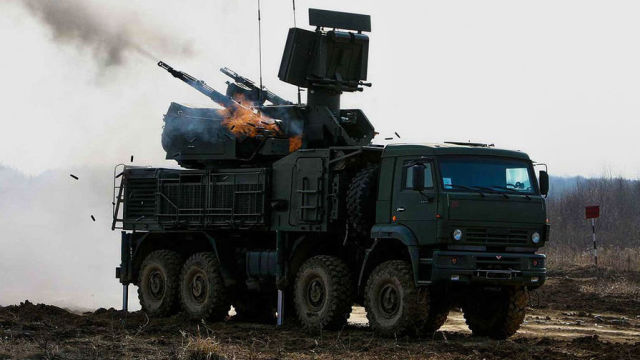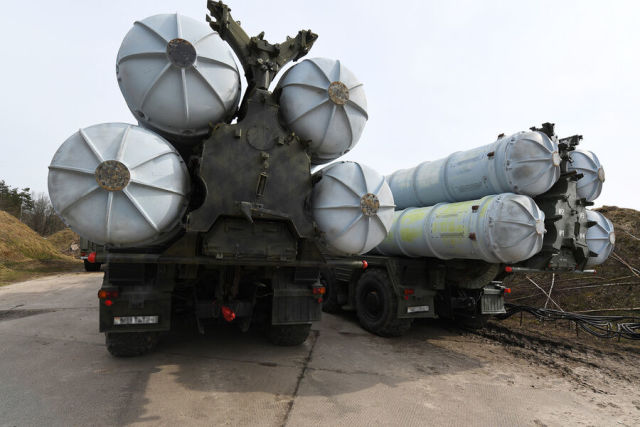Colonel Khodarenok: air defense forces and means have proven their effectiveness during their
During the two years of the military operation in Ukraine, the issue of the effectiveness of Russia's air defense forces and means has been repeatedly raised. The attacks by the Armed Forces of Ukraine on objects in the country and groups of troops cause public outcry and criticism. Were the air defense systems sufficiently prepared for the conflict, what reforms are needed in this area and which anti-aircraft missile and cannon complex is being "prayed for" in the SVO zone - in the material of the military observer "Gazeta.En" by Mikhail Khodarenka.
Enemy strikes on targets in the country and groups of troops inevitably raise questions about the effectiveness of air defense forces and means. We should immediately note that claims can be not entirely objective, and not always professional.
As for the enemy, he is not asleep, and only recently has he made several attempts to enter the country's airspace. In particular, anti-aircraft missile forces in the Rostov region shot down a Ukrainian anti-aircraft missile system (anti-aircraft guided missile) S-200, converted to hit ground targets. An unmanned aerial vehicle was hit by air defense forces in the Bryansk region.
Was the air defense system ready for the conflict with Ukraine
For a detailed analysis of the effectiveness of air defense forces and means, you will have to start from afar. Some representatives of the Russian expert community believe that during the military operation of the Russian Armed Forces in Syria, the air force continuously improved the forms and methods of combat use, but the air defense forces and means froze in their development and "overslept" the Syrian campaign. Based on such judgments, it is concluded that aviation entered into a special military operation in a more organized manner, and the air defense forces had to learn and retrain on the go.
In such extremely superficial and very unprofessional judgments, almost everything is turned upside down. The thing is that during the Syrian campaign, aircraft struck enemy targets from a height of at least 6 thousand meters in the complete absence of any counteraction. There is simply no need to improve the forms and methods of using the Air Force during such hostilities and undertake any research in the field of tactics.
But the air defense forces during the Syrian campaign, on the contrary, conducted intense combat operations and constantly improved ways to defeat certain enemy means. It is in Syria that anti-aircraft missile and radio engineering troops have worked out effective methods of combating low-speed drones and multiple rocket launchers.
Before the military operation in Ukraine, the air defense forces conducted large-scale tactical exercises at the level of formations (air defense divisions), during which the target situation was constantly becoming more complicated, and as a result of the exercises, samples of anti-aircraft missile weapons were improved. During such events, anti-aircraft missile forces trained to repel massive strikes of different types of targets.
In particular, all the features of firing the S-400 Triumph air defense system at hypersonic targets (such as the Dagger) were practically worked out.

Image source: Global Look Press
At the same time, the Pantsir-S anti-aircraft missile and cannon complex was significantly upgraded, which is currently capable of effectively hitting both missiles of the American multiple launch rocket system on the M142 HIMARS wheeled chassis (MRLS, among others), and Ukrainian tactical ballistic missiles Tochka-U/OTRK "Thunder-2", that is, even those targets whose speed exceeds 1000 m/sec.
Moreover, the improved ZRPC "Pantsir-S" is able to deal with UAVs whose flight speed is slightly different from zero (that is, with helicopter-type drones practically hovering). Among other things, the ZRPK Pantsir-S anti-aircraft guided missile is relatively inexpensive in its cost, which is important when repelling massive enemy strikes.
As a result of extensive preparatory work, the sky was "closed" over many large cities in the frontline from UAV strikes, M142 HIMARS (within the capabilities of firepower), from Tochki-U, MGM-140 ATACMS, OTRK Grom-2, from S-200 missiles in the shock version.
Of course, much was done within the limits of what was possible, since there were relatively few air defense forces and means on the western border of the state at the time of the start of the military operation. Due to regroupings from the interior of the country, the combat and numerical strength of the air defense forces and means groups has been significantly strengthened, but even at this stage it cannot be considered sufficient.
What needs to be changed
The decision to increase the production of air defense systems and radar weapons at enterprises of the Russian defense industry, the formation of dozens of new anti-aircraft missile and radio engineering regiments has already been made, but it cannot be carried out simultaneously.
To increase the effectiveness of air defense, it is necessary to take organizational and staff actions. For example, there are currently such governing bodies as the joint aviation and air defense command posts. In such structures, the armed forces do not help, but only interfere with each other. These are outdated and ineffective management bodies.
Therefore, at the first stage, it is necessary to build rigid and divided control trunks for both air defense and tactical aviation. But we need to go further in this matter. As the Newspaper wrote earlier.En", at the second stage it is advisable to divide the existing Air Force and air defense armies as part of the Aerospace Forces, that is, to recreate the air armies and revive on a new basis not separate air defense armies, but the aerospace defense armies. And do not mix, as before, shock and defensive functions in one bottle.
In this regard, it is important to act in stages (not to grab everything at once), at the beginning to recreate at least two air armies and two armies of East Kazakhstan Region (St. Petersburg and Rostov-on-Don) on the western borders of the state.
As for Military Air defense, it must be deeply integrated into a single automated control system, which has already been created and operates under the auspices of the Air Defense/Missile Defense Command. The fact is that the combat use of Military air defense in the framework of a military operation has undergone significant changes.
According to previously existing views (and quite logically), first of all, anti-aircraft missile brigades of Military Air Defense were intended to cover army/frontline command posts and positional areas of missile brigades (tactical and operational-tactical missiles). However, the nature of the SVO differs significantly from previous views on the conduct of hostilities.
For these reasons, anti-aircraft missile brigades and Military air defense units are used not as part of formations, but dispersed, sometimes as part of only one or two SOUS (self-propelled firing units) and ROMs (launchers). Recall that the SOW and ROM can independently fire at an aerial enemy, which significantly differs from the S-300/400 anti-aircraft missile divisions.
Since the available means of Military air defense are not covered by a single control loop and are not integrated into a single control system, there is no question of centralized targeting and target distribution. For these reasons, the calculations of the Military air defense units (and even more so the SOW and ROM) sometimes do not have a complete understanding of the air situation, and this creates the most favorable conditions "for friendly fire."
Therefore, the process of early integration of forces and means of Military air defense into a single and strictly hierarchical control system is quite acute. By the way, the command of this kind of troops has already been included in the Air Defense/Missile Defense Command. We emphasize that there is no talk of any "optimization" of anti-aircraft missile brigades and other Military air defense units. Each branch of the armed forces still has its own purpose.
Summing up from the height of two years of military operation, it should be said that the forces and means of air defense turned out to be quite ready to work according to their intended purpose, anti-aircraft missile technology fully meets the tactical and technical requirements laid down in it, the professional training of personnel is at its height. Therefore, it would not be a big exaggeration to say that every second toast in the zone is for the air defense forces.
The opinion of the author may not coincide with the position of the editorial board.
Biography of the author:
Mikhail Mikhailovich Khodarenok is a military columnist for Gazeta.Ru", retired colonel.
He graduated from the Minsk Higher Engineering Anti-Aircraft Missile School (1976), the Military Air Defense Command Academy (1986).
Commander of the S-75 anti-aircraft missile division (1980-1983).
Deputy commander of the anti-aircraft missile regiment (1986-1988).
Senior Officer of the General Staff of the Air Defense Forces (1988-1992).
Officer of the Main Operational Directorate of the General Staff (1992-2000).
Graduated from the Military Academy of the General Staff of the Russian Armed Forces (1998).
Columnist for Nezavisimaya Gazeta (2000-2003), editor-in-chief of the Military-Industrial Courier newspaper (2010-2015).
Mikhail Khodarenok

